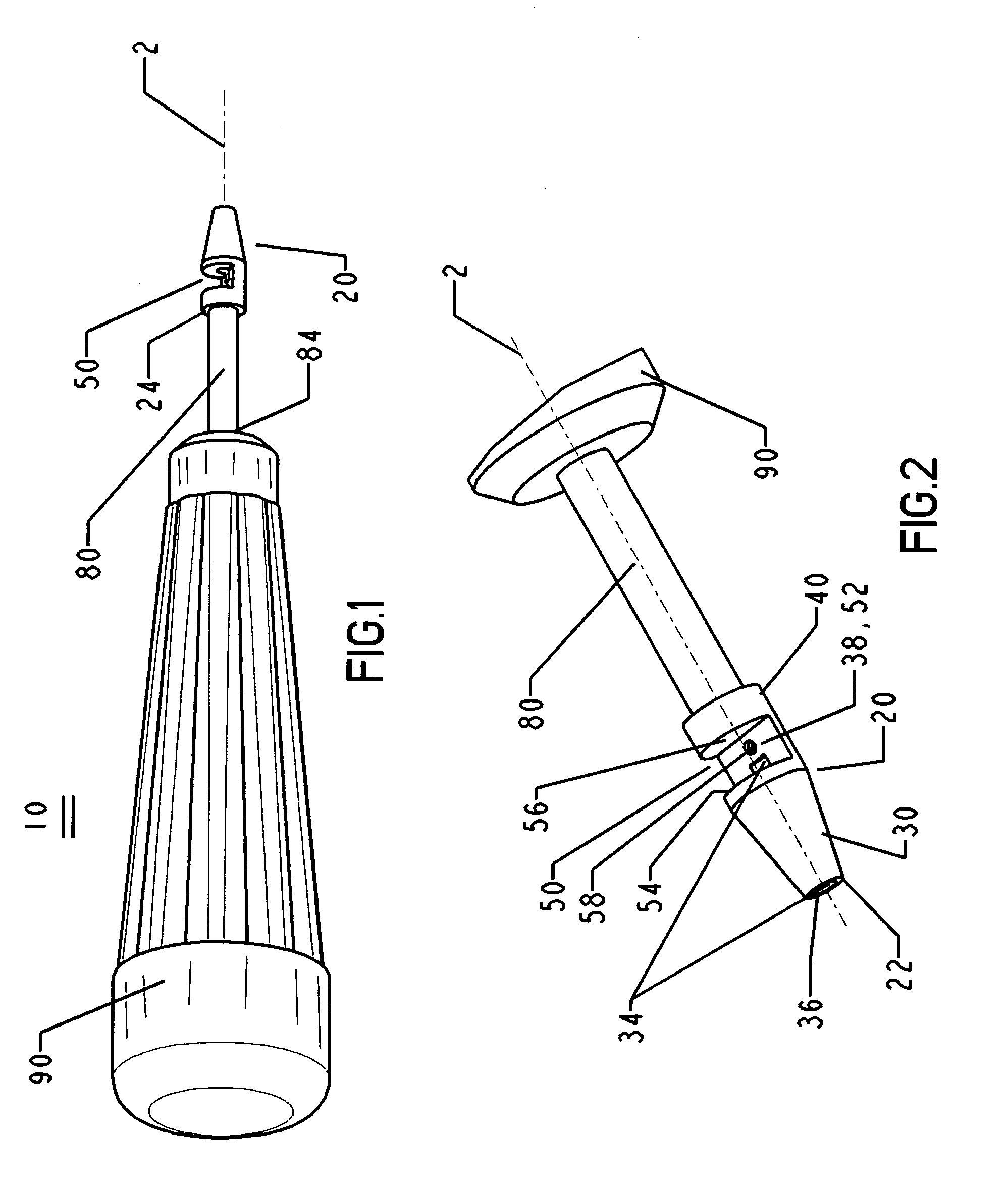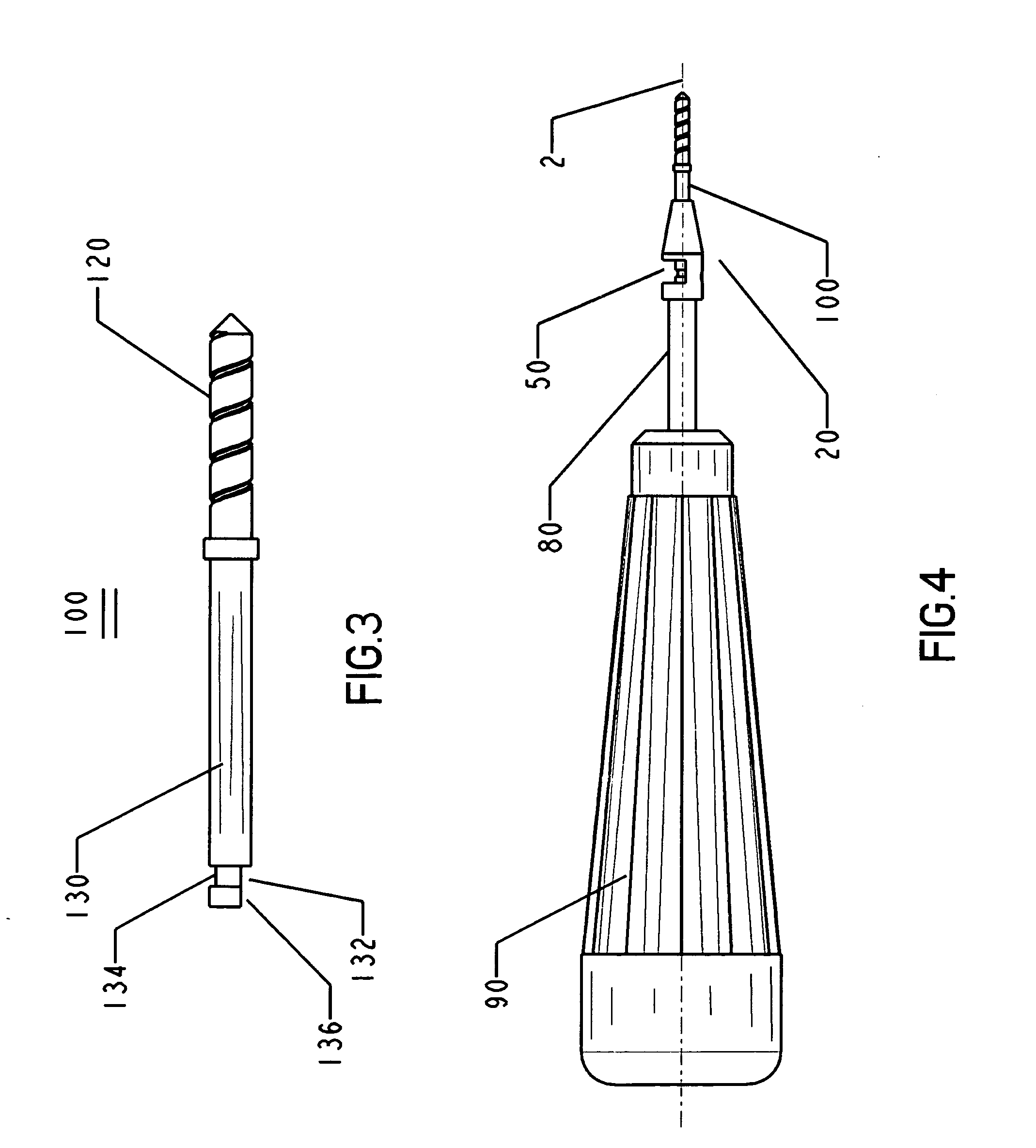Manual driver for implant drills and method of dental implantation
a technology of implant drills and driver devices, which is applied in the field of manual driver devices for implant drills and dental implantation, can solve the problems of reducing the diameter of the implant hole, reducing the risk of bone cracking, so as to improve the diameter and prevent bleeding
- Summary
- Abstract
- Description
- Claims
- Application Information
AI Technical Summary
Benefits of technology
Problems solved by technology
Method used
Image
Examples
Embodiment Construction
and Claims appended herewith.
BRIEF DESCRIPTION OF THE DRAWINGS
[0012]FIG. 1 is a perspective view of the manual driver.
[0013]FIG. 2 is an enlarged perspective view of the chuck and the extension shank of the instant manual driver.
[0014]FIG. 3 is an example of a commercial available implant drill that may be used with the manual driver of the present invention.
[0015]FIG. 4 is a side view of the manual driver, including an implant drill secured therein.
[0016]FIG. 4A is a fragmentary axial cross-sectional view along the longitudinal axis of said manual driver.
[0017]FIG. 4B is a bottom view of the chuck shown in FIG. 4.
[0018]FIG. 5 is a fragmentary axial cross-sectional view along the longitudinal axis of said manual driver, showing a variation of the transverse bore and an Allen head screw.
[0019]FIG. 6 is a fragmentary axial cross-sectional view along the longitudinal axis of said manual driver, showing the enlarged screw head being disposed outside of the transverse bore.
[0020]It is no...
PUM
 Login to View More
Login to View More Abstract
Description
Claims
Application Information
 Login to View More
Login to View More - R&D
- Intellectual Property
- Life Sciences
- Materials
- Tech Scout
- Unparalleled Data Quality
- Higher Quality Content
- 60% Fewer Hallucinations
Browse by: Latest US Patents, China's latest patents, Technical Efficacy Thesaurus, Application Domain, Technology Topic, Popular Technical Reports.
© 2025 PatSnap. All rights reserved.Legal|Privacy policy|Modern Slavery Act Transparency Statement|Sitemap|About US| Contact US: help@patsnap.com



